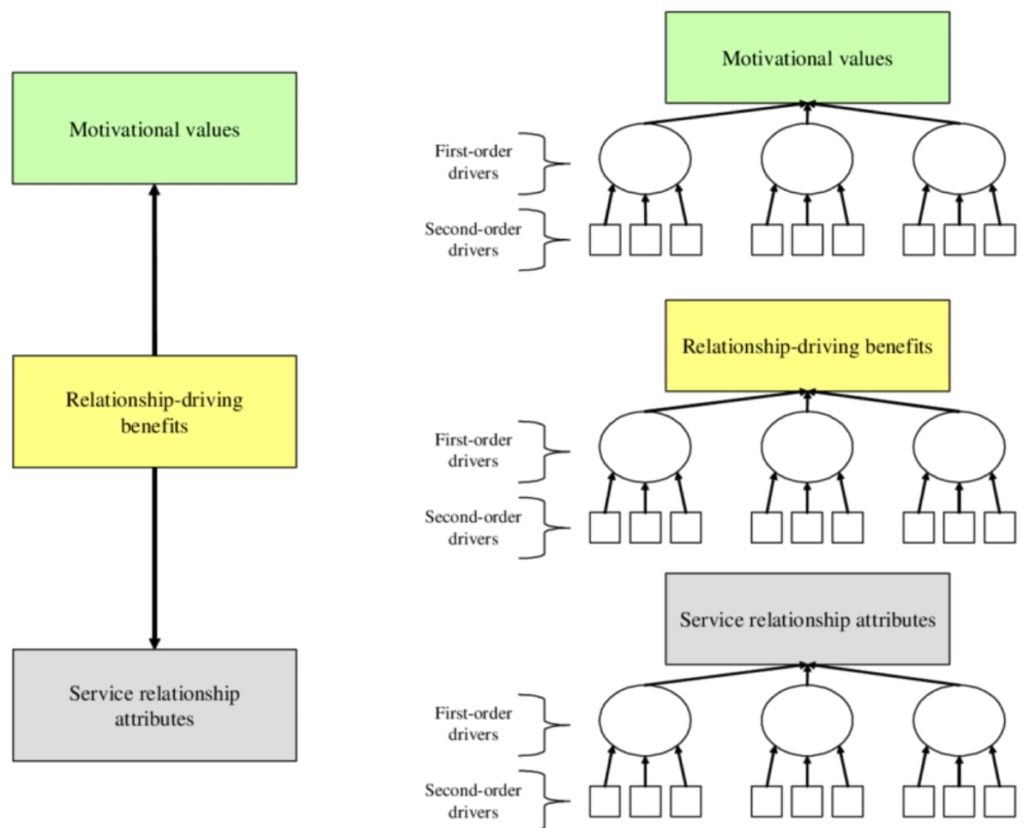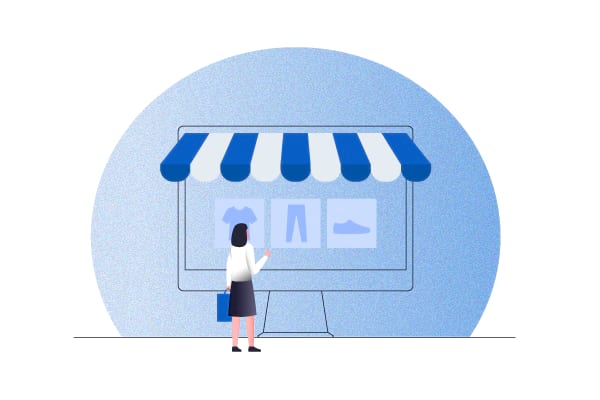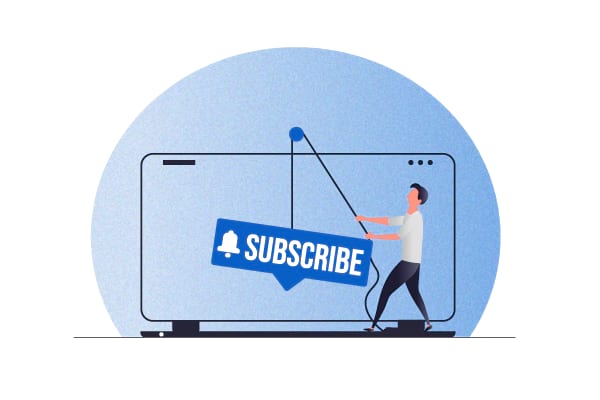If tracking your business’s metrics tells you something, it’s this: Customer retention is as critical as customer acquisition. Do some “customer acquisition costs vs. customer retention profits’ math, and you’ll instantly see the value of repeat customers.
According to one study, it costs five times more to get a new customer than to retain one. That explains why businesses want their customers to become customers for life — or repeat customers — and keep returning to them. Repeat customers also buy more, more often, and even spread word about your brand.
In this article, we’ll take a detailed look into what a repeat customer is, how you can calculate your repeat customer rate, and three ways you can convert your ad hoc customers into repeat customers for life. We’ll also talk about subscribers — a special kind of repeat customers!
What is a repeat customer?
Simply put, a repeat customer is a regular — one who makes repeat purchases from you. Technically, any customer who makes a second purchase with your business counts as a “repeat customer.”
How to calculate your repeat customer rate
To calculate your repeat customer rate, take the number of customers who’ve made a repeat purchase — these are simply customers with orders more than two — and divide it by the number of your total customers. This metric is expressed in percentage, so the formula becomes:
Repeat customer rate = (Number of repeat customers/Total number of customers)*100
So if you have, say, a 1000 customers in your customer base and 200 of them keep returning to get more stuff from you, your repeat customer rate would be a good 20%.
We can loosely call this metric an eCommerce equivalent to a service business’s customer retention rate.
Depending on your industry, you can calculate your repeat customer rate daily, weekly, monthly, or annually.
But what really is a good repeat customer rate?
Several studies suggest that the average repeat customer rate lies in the 20-40% range and varies greatly by industry. Replenishable items, for instance, see more repeat purchases, whereas high-end tech items with long lifecycles see fewer. If you fall into this range, you’re doing okay.
The repeat customer rate is a crucial metric for any business, especially for eCommerce businesses. This is so because getting a new customer and having them purchase in this industry almost always means offering a generous new or first-time purchase offer. This doesn’t mean profits. It can even get difficult to offset the cost of getting the lead/customer in the first place. That’s why these businesses use a host of strategies for customer retention to get their first-time customers to make their second and third purchases and generate a good lifetime value. Now let’s look at three ways to make your customer a repeat customer.
Convert your customers into repeat customers with Autoship
Get Autoship Cloud today and start converting your customers into repeat customers — or even better… into subscribers! Sign up for a free trial now.
Three no-fail ways to convert your one-time shoppers into repeat customers
1. Make a plan for that second sale
To convert a new buyer into a repeat customer, you need to get them to make their second purchase, followed by a third one, and so on. To do so, it’s essential to see how your new and repeat buyers behave.
In his excellent post on repeat orders, Eric explains how you can decode this repeat buying behavior and find your business’s repeat ordering trends with these metrics:
- The “first to second” order rate: This is your store’s overall repeat purchase rate. These are returning customers who return to buy again after their first purchase.
- The “second to third” repeat order rate: These are people who make a third purchase with you after a second one.
- The “third to fourth” order rate: These are buyers who make a fourth purchase post their third purchase.
You get the drift.
As Eric explains, studying these trends shows you where you need to improve your repeat marketing efforts. If you see that you aren’t getting the second sale — about 80% of customers never make a second purchase with a business actually — you must address ways to get the second sale.
The most common way eCommerce businesses get such repeat business is by giving their customers second- and third-time coupons. For example, if you’re a first-time buyer, a brand might design a marketing campaign and give you an exclusive coupon for your second purchase, valid for a week. We’ve all got those BRANDXSECOND coupons, haven’t we?
While these tactics can effectively secure a second or third sale, they aren’t sustainable. Another way to go is to recommend related products in your post-purchase messaging. Your email receipt for the order, for example, can suggest a few products to the new customer and instantly earn a repeat sale. (More on this below. )
In general, understanding the drivers for repeat purchases can help get these immediate repeat sales. In its seminal research on customer loyalty, Bain & Company identified several repeat purchase drivers that are relevant even now:

Find out what drives shoppers to make a second or third purchase in your industry.
Next, try to address them in your marketing mix. A discounts strategy can only support you so much!
Shopify states that a customer who returns for a second purchase is 45% more likely to come back for a third purchase, and one that makes four purchases is 56% more likely to buy again from you. So essentially, you need to do everything you can to get those first few repeat sales. And while you do it, you can earn your customers” loyalty, post which they’ll naturally default to your company. Study your customer data and see how you can get even more of your first-time buyers to behave like your repeat buyers. This framework from Toward a theory of repeat purchase drivers for consumer services can come in handy:

Notice how service relationship attributes like customer experience, customer support, and customer satisfaction are also vital in retaining current customers and reducing the churn rate while getting repeat sales.
Nurture customer relationships with personalized post-purchase messaging
When making a repeat customer of a new one, your post-purchase “touches” are the most important. It doesn’t matter whether you’re a B2C or B2B company, customers want personalized service. Here are a few ways to get started:
1. Send relevant content
If you’re a mealkit subscription box service, follow up with a meal preparation video tutorial. Tell your users how they can make the most of their recent purchase. This can be a great way to build a relationship with your customers. Quite a few B2C businesses fail to leverage content beyond the pre-purchase journey although content is an effective marketing strategy for earning loyal customers.
2. Send relevant offers
Use what you know about your customers to make a relevant offer. For instance, if a customer has brought supplements for a month, reach out before their stock ends and offer a refill. Did you know that 91% of consumers are more likely to buy from a business that recognizes and remembers them and uses its data to offer relevant offers and recommendations? One easy way to show you understand your shoppers is to recommend products that might be relevant to them.
3. Offer meaningful recommendations — you can start right away
You can start pushing for a second sale immediately. So if you’re a pet food seller, use your email receipt to recommend a set of bowls or something similar and relevant. 83% of consumers willingly share their data for personalized shopping experiences. This includes using their purchase history with you to make better and more personalized recommendations. From your website to your email channel, use everything to promote customized offers. When existing customers return to your store, show them the products they browsed through or those similar to them right on your homepage — these serve as good nudges and can influence about 85% of them to buy. Send targeted messaging, including personalized product recommendations even inside your transactional emails. Invest in email marketing automation and boost your repeat offer conversion rate by sending emails at the perfect times (behavioral targeting). All in all, learn from customer feedback, study your seasonal trends, identify buyers’ preferences, and design retention strategies accordingly.
Run a customer loyalty program
Customer loyalty programs are a great way to convert your new customers into regulars. Your customers can feel 79% more likely to keep buying from you if they run a good loyalty program.
Loyalty programs come in many forms. One of the most common formats for businesses is a rewards program. Here, purchases, reviews, social shoutouts, and more help customers earn points that they can redeem for discounts. Most businesses design these programs to be free.
In contrast to such programs, you also have “premium” loyalty schemes like Amazon Prime that you need to buy. You might be surprised to know that customers who purchase premium loyalty programs actually end up buying more from a business. They’re 60% more likely to spend more with your company than free loyalty programs’ subscribers. Customers who sign up for premium loyalty programs also happen to be a business’s best customers as they’re actually paying to keep doing business with it.
Both types — free and paid — have their pros and cons. For instance, it’s easy to get signups with the free option as incentives like discounts and free shipping offers can be enticing. However, in comparison, loyalty programs (usually the premium ones) that offer experiential perks like exclusive access/early access to new products and value-added services can be more appealing.
Gaining subscribers — a special case of repeat customers
Subscribers are repeat customers of a special kind. Subscribers sign up for a plan for your products. For instance, if you sell cannabis products as subscriptions, your subscribers will sign up to get a box delivered every month (or bimonthly or quarterly… depending on the subscription plans you offer).
eCommerce stores are increasingly pivoting to the subscription model as consumers are opening up to it. On average, eCommerce consumers maintain at least two subscriptions, with about 35% keeping three. More so, eCommerce stores selling product subscriptions see a 15% increase in their average customer lifetime value.
Subscriptions are also one of the three best growth strategies for eCommerce businesses looking to really grow. Explore eCommerce subscriptions here and how Autoship Cloud can help!
Wrapping it up…
All the advice you find on converting customers into repeat customers really comes down to these three things: 1) Getting those crucial second and third sales, 2) sending relevant and personalized communications, and 3) running loyalty programs.
Whatever niche you work in, the tactics we saw should work for you.
But as a B2C or D2C eCommerce or even as a B2B supplies business, you should think beyond getting repeat customers. Convert your products into subscriptions and launch Amazon-like subscriptions schemes on your store with a few easy steps with Autoship Cloud. Sign up for Autoship Cloud now.
Convert your customers into repeat customers with Autoship
Get Autoship Cloud today and start converting your customers into repeat customers — or even better… into subscribers! Sign up for a free trial now.



